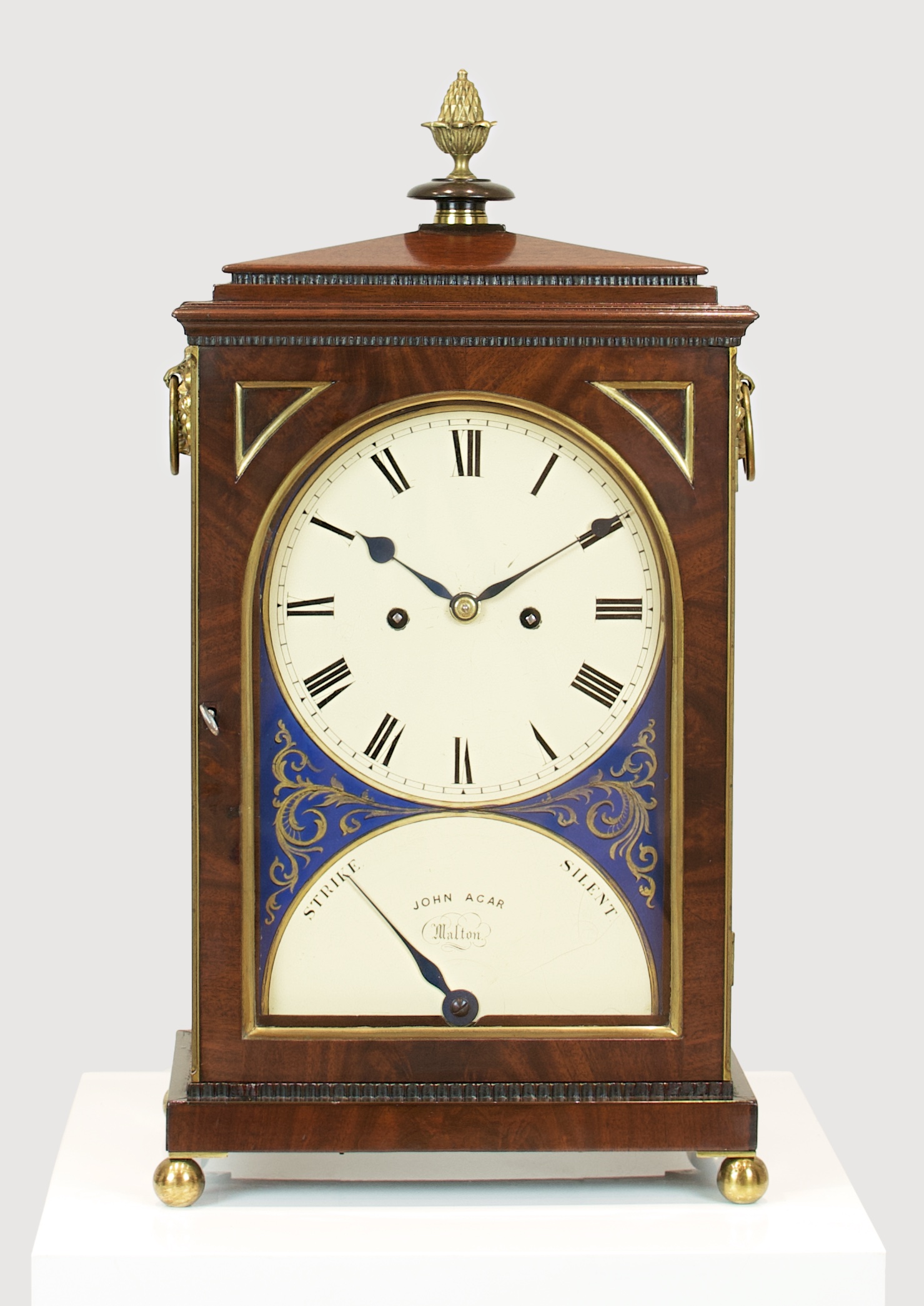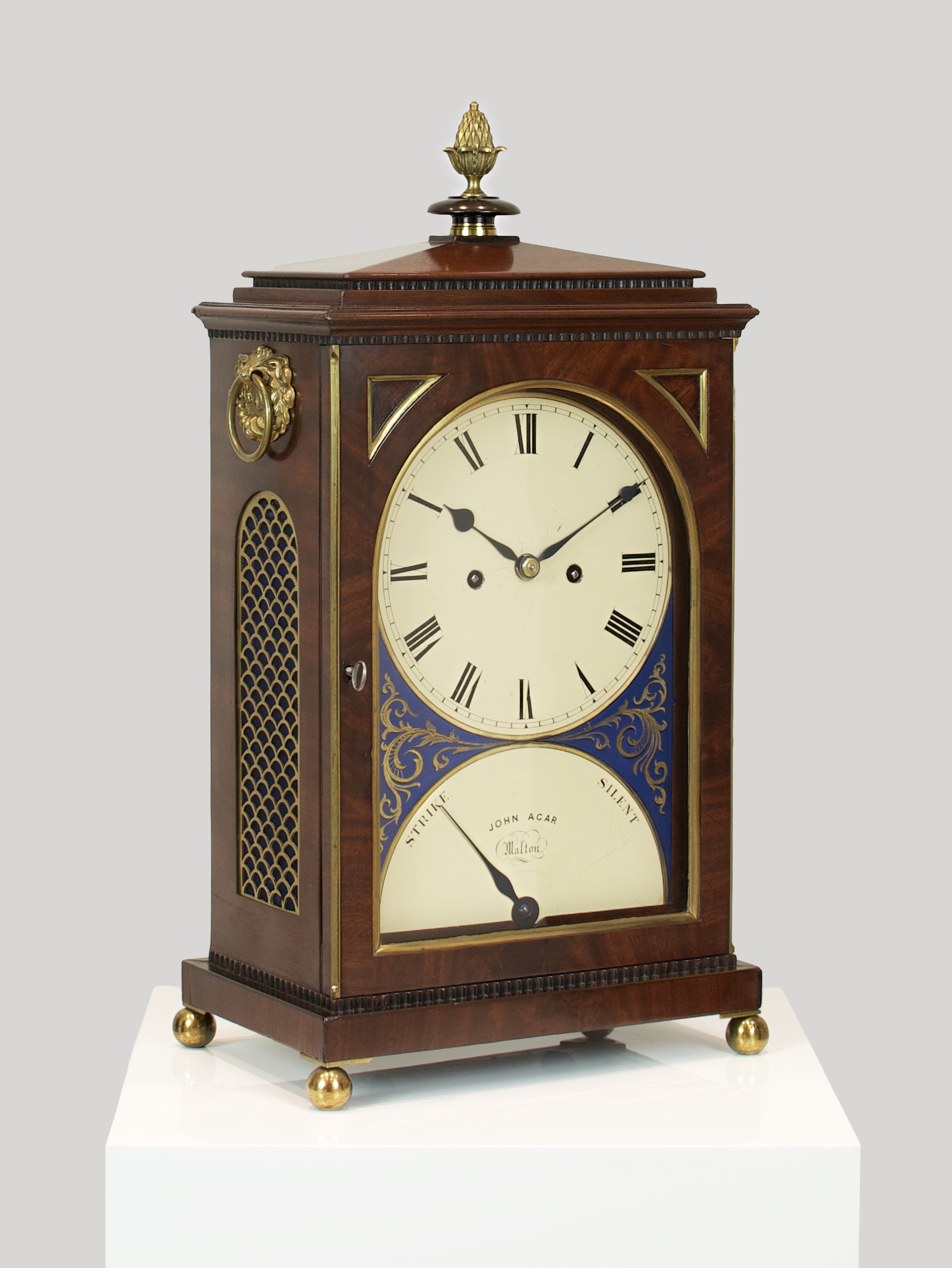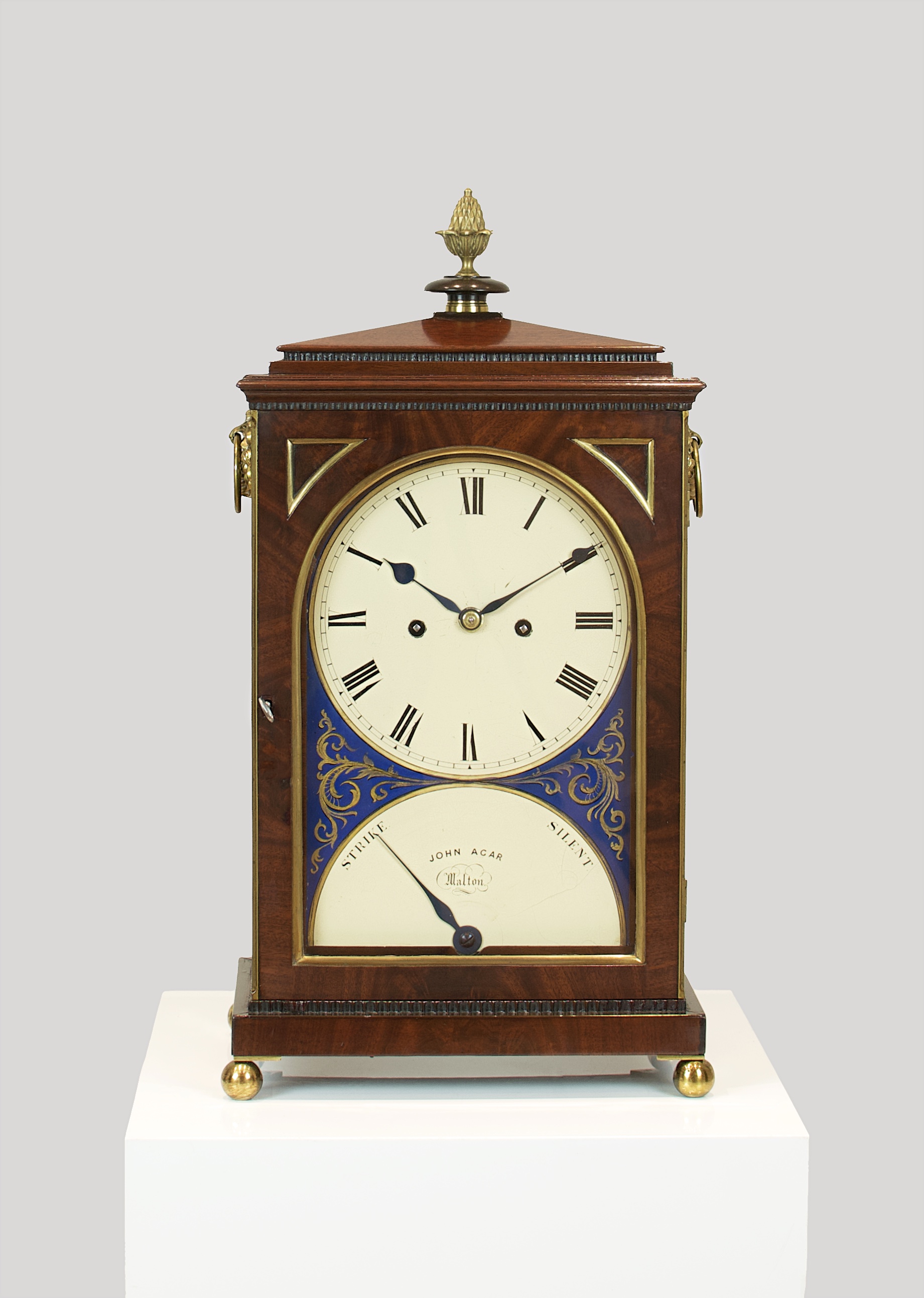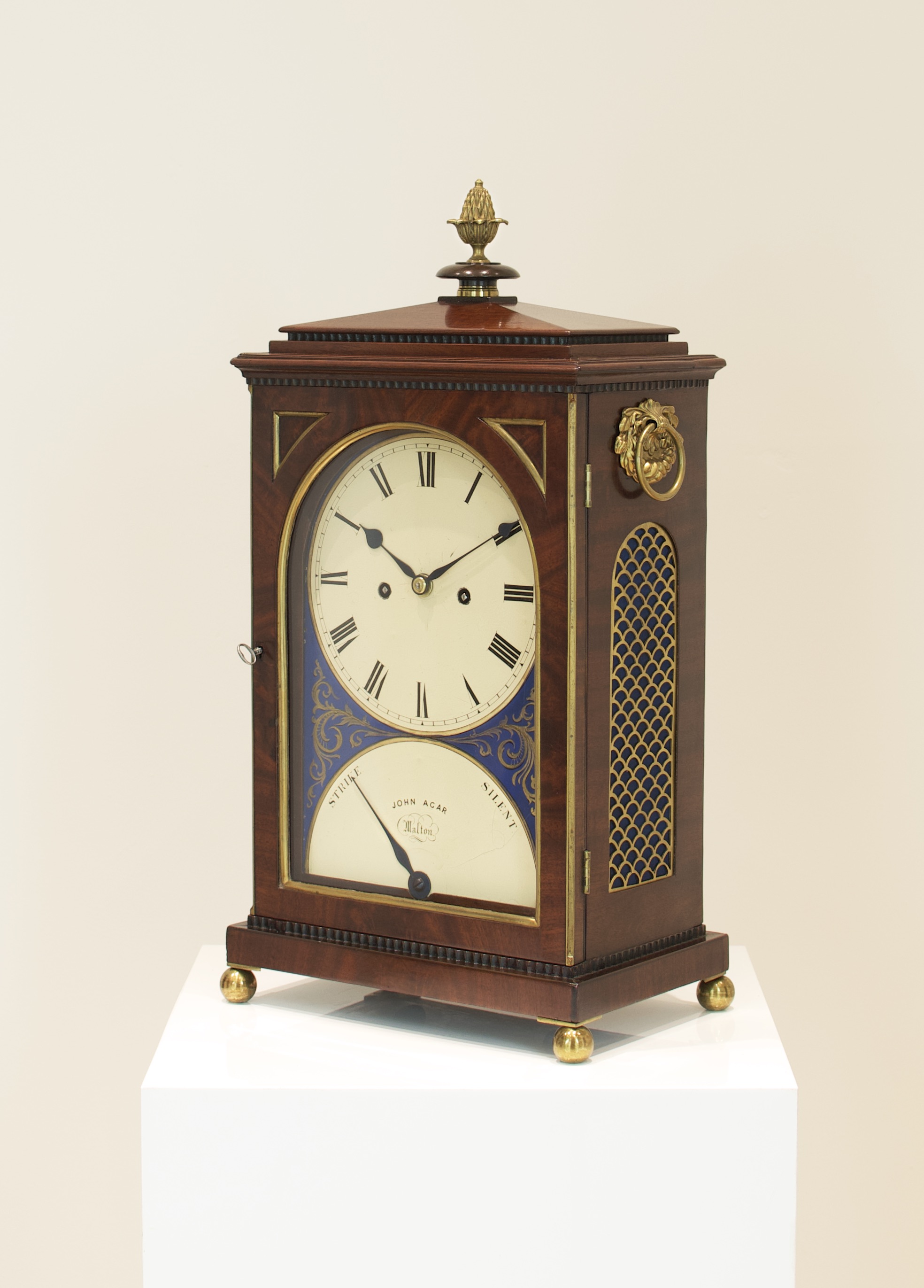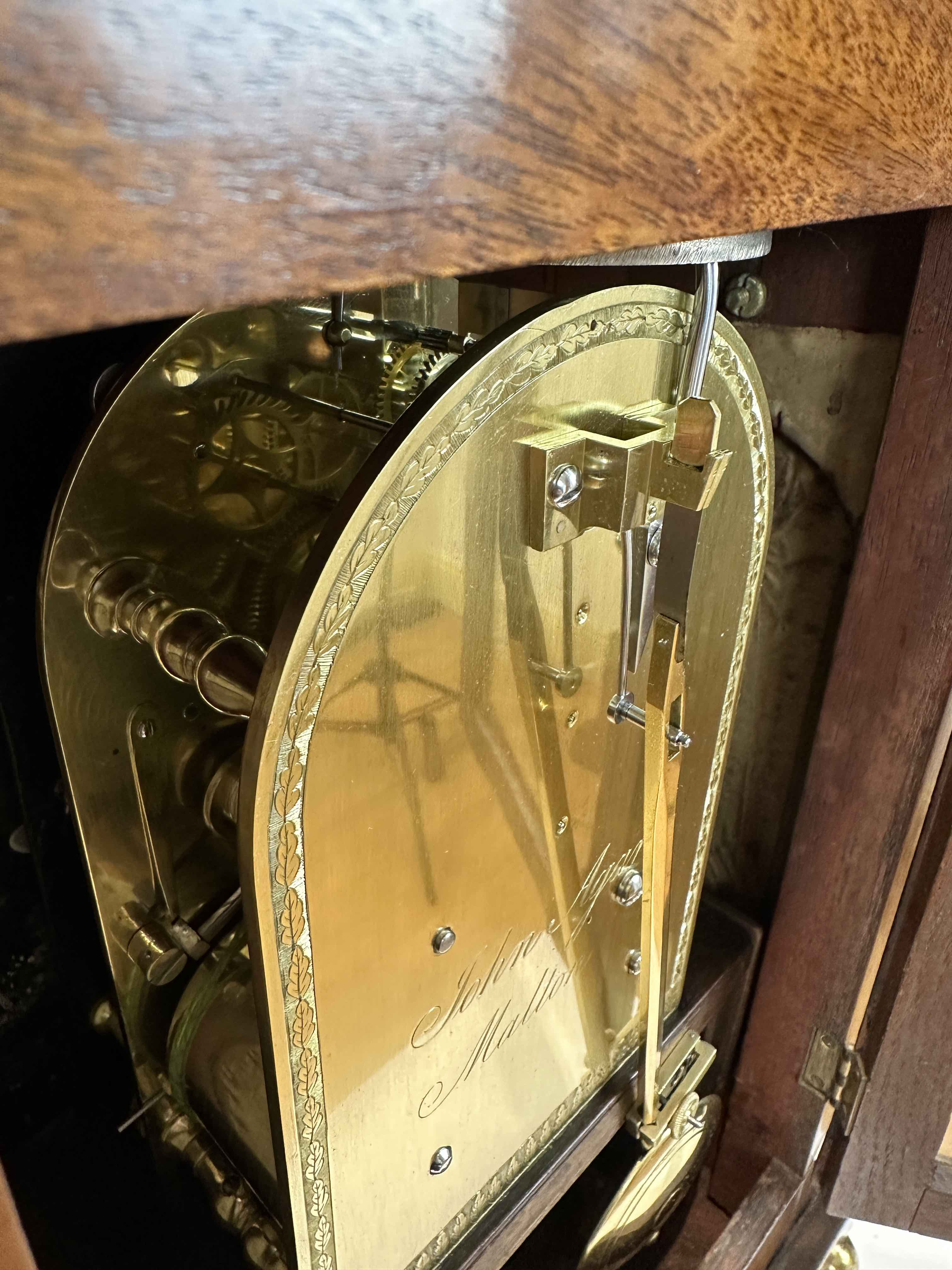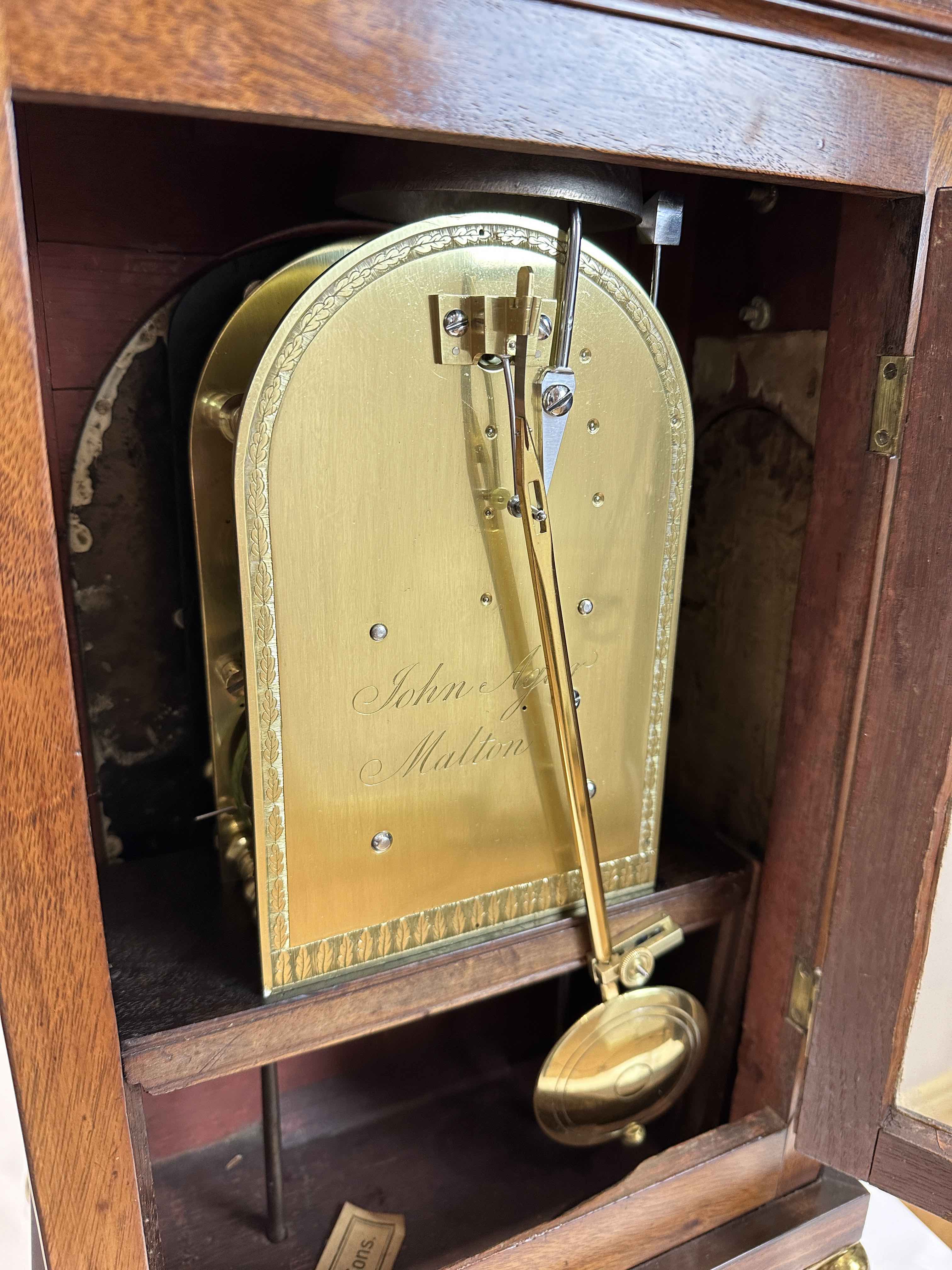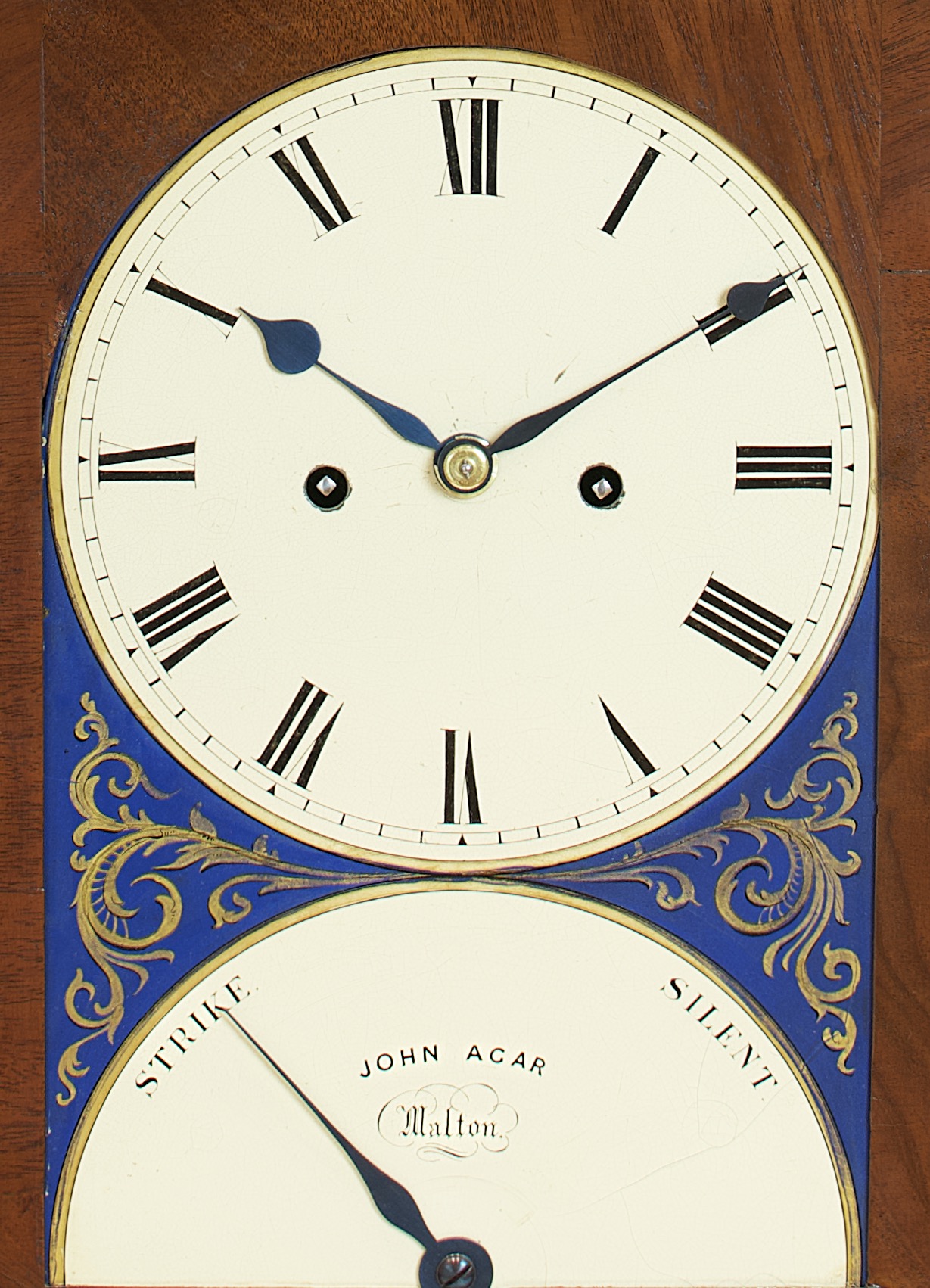A fine quality George III mahogany bracket clock by John Agar of Malton.
- Maker: John Agar
(II), Malton 1784, died 1814 aged 64, buried at St
Leonard's church.
- Date: Circa 1800
- Height: 57cm Width: 30cm Depth: 19cm
- Price: £5,500
Overview
A fine quality and unusual mahogany 8 day bracket clock,
by John Agar (II) of Malton.
John Agar (I) is recorded in Dinsdale Old Clockmakers of
Yorkshire as born around 1730 and made Free in the City of
York as a clockmaker in 1760. He lived at Castlegate until
at least 1809 and died in 1815.
His son, also called John Agar (II) which the present
clock was made by was apprenticed to his father in 1766
and made Free in 1782 in York, by 1784 he had moved to
work in Malton, he pre-deceased his father in 1814.
Case
The well proportioned mahogany chamfer
top case surmounted with a single brass pineapple finial.
The arched glazed door with canted brass corners and inset
to the front with brass bound recessed panels, silk lined
cast brass fishscale sound frets to the case sides with
ornate brass carrying handles above, standing on a raised
plinth and resting on four cast brass ball feet.
The glazed door with brass edge moulding and the original
locks to both front and rear door.
Dial
The unusual japanned arched dial with a
circular white painted centre and Roman chapter ring
surrounded by finely executed japanned blue and gilded
decoration. The lower demi-lune section with Strike/Silent
dial and signed to the centre John Agar Malton.
The dial design is influenced by the
bracket clocks made in York by the eminent maker Henry
Hindley and John Agar (II) during the 18th century.
The dial is in excellent original
condition with the original finish.
Movement
The fully restored, fine quality,
double fusee eight day movement with the original
anchor escapement striking the hours on a single
bell.
The escapement is an unusual design and
in the manner of Agar (I), being a recoil escapement but
with faces projecting at right angles from the frame,
spanning 7 1/2 teeth of an escape wheel of 36 teeth.
Strike / strike silent facility.
Brass bob pendulum, with spring loaded
knurled hold fast pendulum restraint.
The signed arched plates with finely
engraved oak leaf border, united by 5 large ornately
turned double baluster pillars,
The present clock exhibits strong
similarities with the work of the celebrated York
clockmaker Henry Hindley. In particular the distinctive
design of the double baluster pillars, which follow those
first used by Henry Hindley in around 1742 and the arched
shape movement plates.
Hands
Blued steel hands of spade design.
Listen to striking sound clip
All of our clock movements are restored by our horologist who works exclusively for us.
Our horologist is a Fellow of the British Horological Institute (FBHI), having 35 years of full time professional engagement in the repair & restoration of clocks, watches, music boxes & barometers. He was the recipient of the 1977 Worshipful Company of Clockmakers Bronze Medal.
Please contact us for further details and delivery information.
